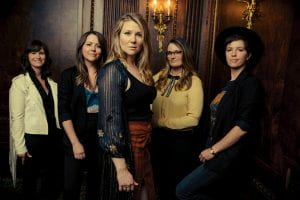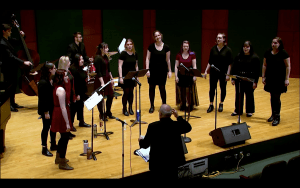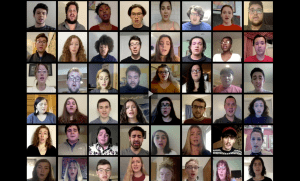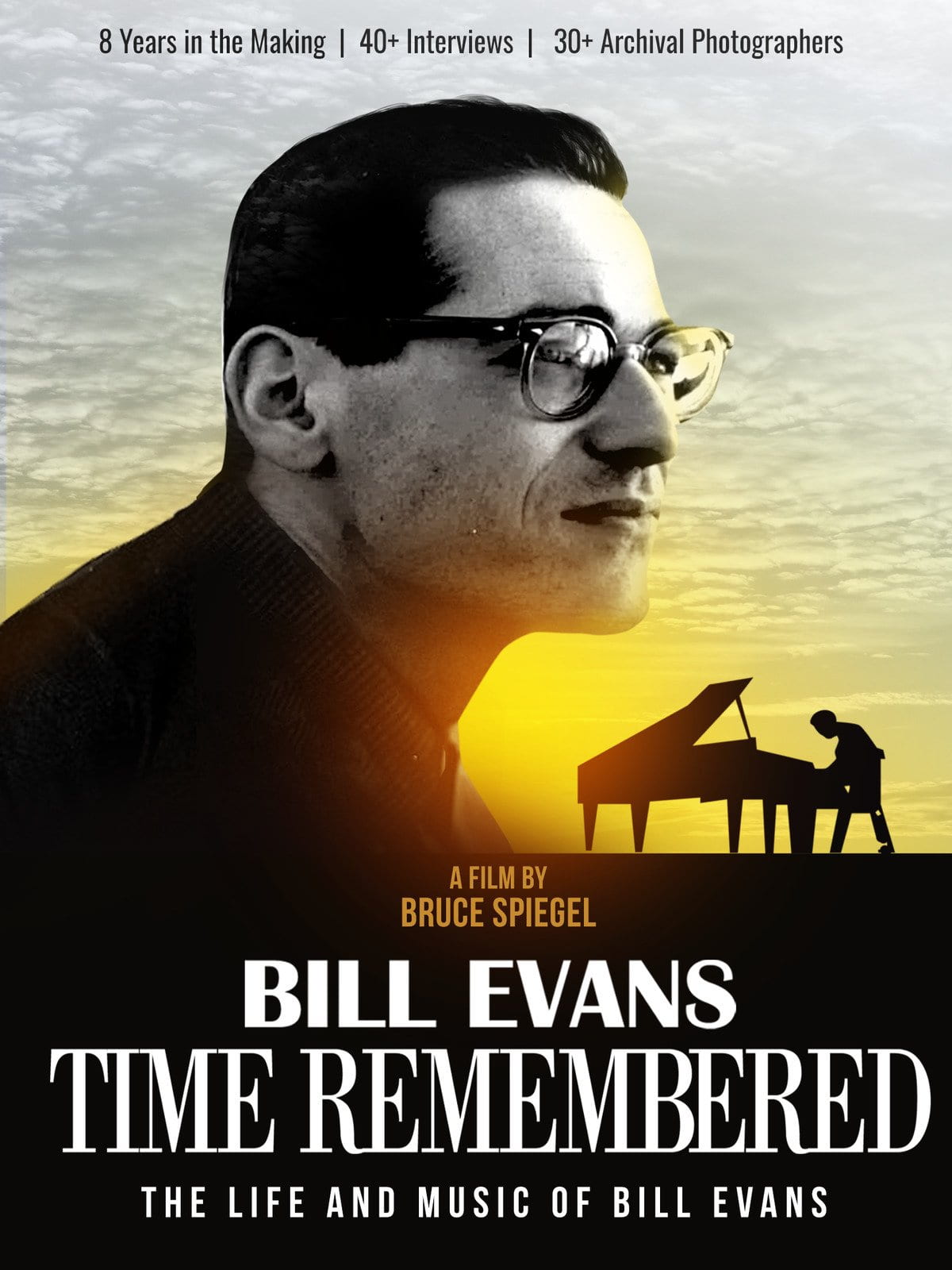Kimber Ludiker (fiddler, second from right) and Avril Smith (guitarist, far left) dedicate their Monday nights to delivering a “hoedown” for their friends and fans
Desperate to find a concert livestream on a Monday night, I stumbled upon Della Mae, a bluegrass girl group that has been hosting a Facebook Live Hoedown every Monday since COVID-19 sent us all into quarantine. Founded by fiddle player Kimber Ludiker, vocalist/guitarist Celia Woodsmith, and mandolinist Jenni Lyn Gardner, the band has featured various female guitarists, bassists, and singers since its creation in 2009. According to their website, “[Della Mae’s] mission as a band is to showcase top female musicians, and to improve opportunities for women and girls through advocacy, mentorship, programming, and performance.” In a male-dominated music scene and bluegrass genre, they stand out as not only an all-female group performing traditional folk music but also as musicians who promote the well-being of women and girls all over the world. Over the past eleven years, Della Mae has traveled to over 30 different countries, performing their music and inspiring girls to follow their passions, even if it means being one of very few women in a field.
Della Mae has produced four albums and their most recent, “Highlight,” a tribute to sexual assault survivors, came out this past year. Unfortunately, COVID-19 cut their tour short, leaving them without live venues to perform after their concert on March 12th. This obstacle couldn’t stop these vibrant women from making music, though, which is what sparked Monday Night Hoedown. Inspired by other artists who were performing via Facebook Live, Kimber decided to start weekly hoedowns, playing her fiddle and accompanied by Avril Smith on guitar. The duo has persisted, not missing a week since they started back in March, performing bluegrass classics for their fans and friends on Facebook. Showered with praise from people in the comments, Kimber and Avril grinned and played requests for an hour and a half, the notes flying off their instruments as though the strings could sense the musicians’ fingers coming in for a pluck.
My experience watching the livestream was definitely unconventional – my laptop screencast to a TV in a study room on the second floor of an engineering building with one Airpod in my ear and the other in my friend’s – nonetheless, I was immersed in Kimber and Avril’s animated performance. Though talking to a computer screen, the two made me feel welcomed, as though they were treating me to an after-dinner jam session in their home. The tangy tones from the fiddle filled me with memories of campfire songs and Avril’s hearty guitar strumming kept me grounded. Even though these bluegrass tunes were new to me, I was captivated by every long note Kimber played on her fiddle, the warm sound of each pitch enchanting me as she drew her bow across the hearty strings. The two women breezed past notes rapidly, but never letting their cool demeanor fade. Kimber and Avril took turns being featured in each song, Kimber tapping her bow to supplement Avril with a beat and Avril strumming constant chords to back-up Kimber’s sprightly bowing. The music was lively, bringing just about anyone to tap their feet along to the guitar and fiddle.
Between songs, the women answered questions from the comments and greeted friends who frequent the weekly stream. The two were amicable and cheery, asking for requests from those watching and updating us on life changes – such as Kimber’s decision to participate in “Sobe-tober.” Kimber cracked a few jokes, saying that she was “just getting these fingers loosened up,” and apologizing for getting some notes wrong, while Avril reassured her that the wrong notes were simply personal interpretation of the song. The friendly exchanges between Avril and Kimber made me feel like I was part of their friend group and this was just another day with Della Mae. And just when the intermittent conversations seemed to be lasting too long, the pair would decide on a new song, strumming the first few chords and tuning the fiddle before jumping into another high-speed, high-energy number. Had I not been in a study pod, surrounded by strangers cramming for engineering tests, I would have gotten up and danced to the bubbly music that Kimber and Avril played.
One song that stuck with me was “Blue Violet Waltz,” the slowest tune of the set that had a familiar ring to it. Kimber randomly decided to play it, saying that an old friend had taught it to her, but she couldn’t remember the exact name. Luckily there were dozens of bluegrass fanatics in the comments, eager to offer the title of the song so that newbies like me could listen to it again later. The song felt like a lullaby to me – a song that I could drift to sleep to by a fireplace on a cold autumn night. The fiddle shifted seamlessly between bowed notes and plucked notes, the vibrato of the strings perfectly juxtaposed with the playful plucking that followed. While Kimber toyed with different techniques, staccato plucks, taps on the body of her instrument, and classic bow work, Avril kept a steady pace, playing sweet deep chords to cradle the fearless fiddle. Though the fiddle was notable in this piece for its versatility, Avril’s guitar was comforting, supplementing Kimber’s experimentation with gentle and familiar strumming.
Although COVID-19 has hurt performers particularly hard, Della Mae has demonstrated its resilience through their Monday Night Hoedowns. By taking what the musicians already had – a vast repertoire of bluegrass melodies, a loyal fanbase, and a solid social media presence – the band has continued to bring in revenue as well as provide entertainment for its audience. What could have been a hefty obstacle for the group has proven to be a catalyst for community, as the band has established themselves on Patreon and other streaming platforms over quarantine. Unlike a regular tour season, when the band would be on the road every day, traveling to perform for fans all over the country, Della Mae has been able to save themselves the exhaustion – and the gas – by performing on Facebook Live for fans from New Hampshire to Minnesota and beyond. While the experience is nowhere near the same as a live performance, fans get to communicate more intimately with Kimber and Avril during these hoedowns, asking questions and making requests in the comment bar. These weekly concerts provide a unique opportunity for both performer and listener, as Kimber and Avril talk openly about their experiences as musicians producing and performing music. Instead of the often disconnected ambience of a large concert venue, the Facebook Live Hoedown allows members of Della Mae to deliver beautiful songs in an intimate environment.
Della Mae has brilliantly exemplified how to perform during this socially-distant season, adapting sets to the digital age and taking this opportunity to grow closer to its audience. While more popular artists may have more listeners, Della Mae’s underground nature affords them with an intimate connection to those who listen to their music. Though I would love to hear more of their original pieces on the next livestream, the traditional bluegrass tunes highlight Kimber and Avril’s expertise in their instruments. Furthermore, newcomers like me get to hear the duo play the songs that inspire their own composition. If you’re looking for a livestream to start your week off right or just for something to dance along to on a Monday at 8, look no further than Della Mae’s Kimber and Avril’s Monday Night Hoedown.










